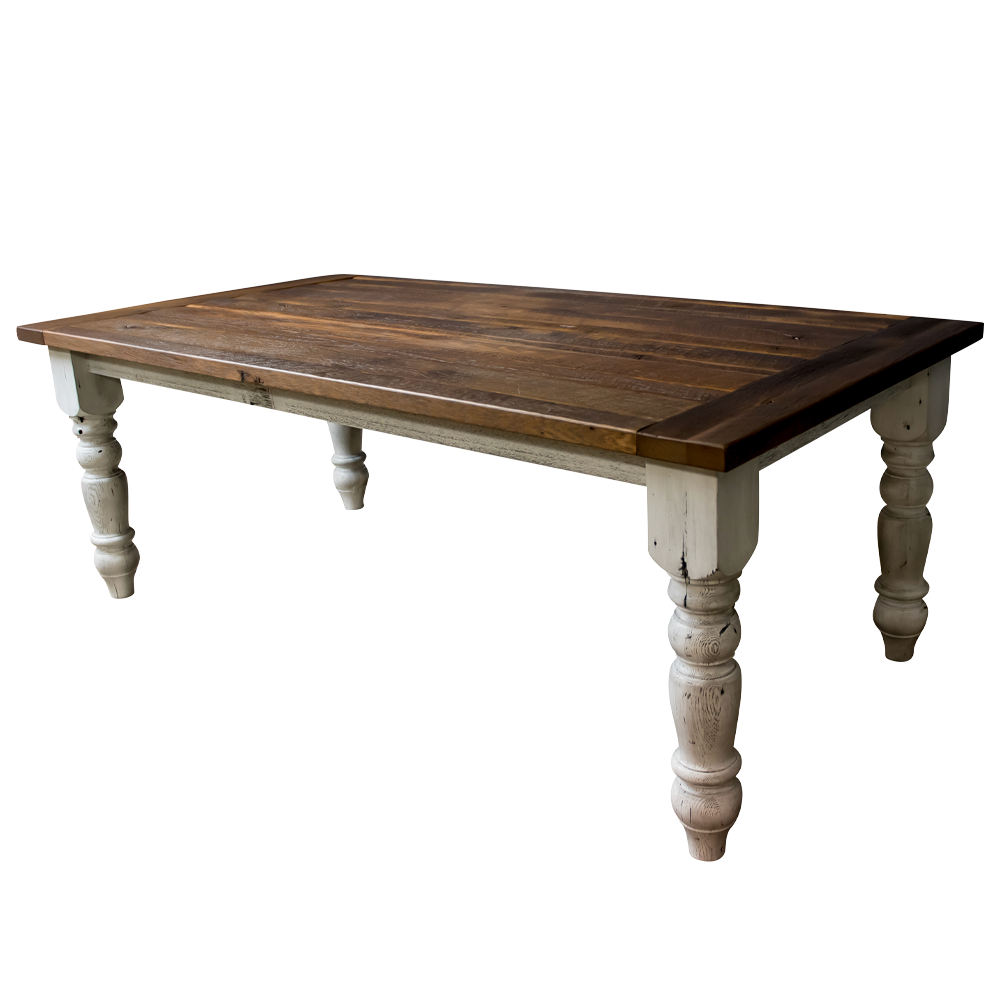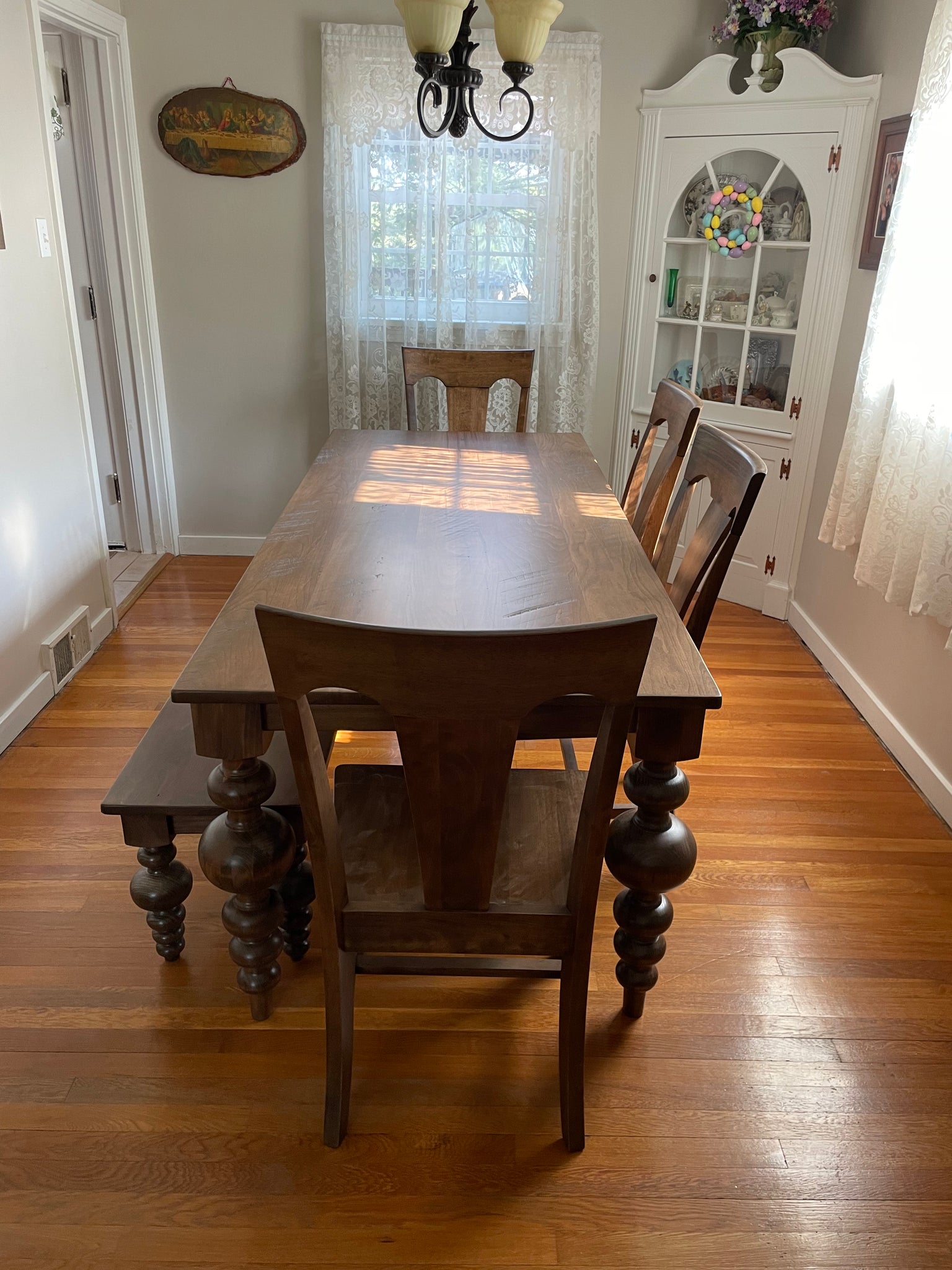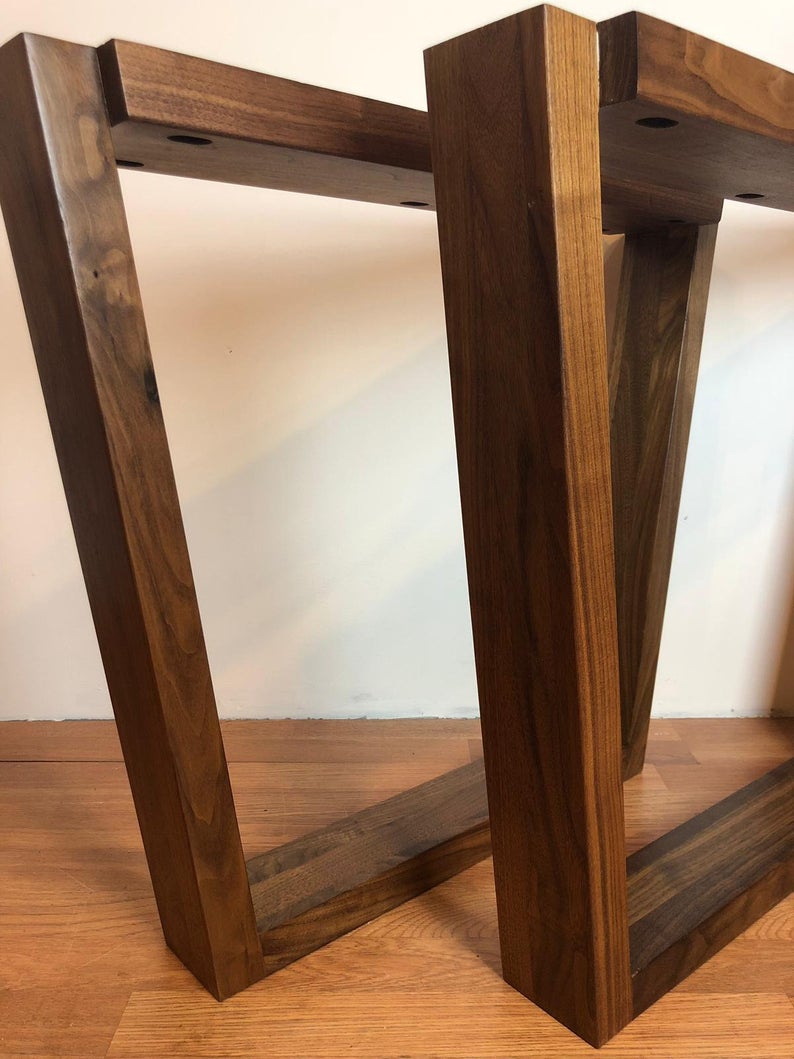Discovering the Various Sorts Of Dining Table Legs Timber for Your Dining Room
The option of dining table legs timber can exceptionally influence both the useful and aesthetic high qualities of your eating room. Strong wood alternatives, such as oak and walnut, provide a classic appearance with unparalleled longevity, while crafted wood choices provide ingenious designs that simulate the splendor of natural grains. In addition, the growing fad of reclaimed timber presents a sustainable component that interest ecologically aware consumers. As we check out these various choices, it comes to be important to take into consideration not only the visual allure but likewise the sensible implications of each product selection. What elements should lead your decision?
Strong Timber Options

Unlike crafted products, strong timber is much less susceptible to warping and damage over time when correctly preserved. Each piece of solid wood is unique, showcasing individual qualities that add to the charm and personality of the eating table.
In addition, strong wood can be completed in various ways, ranging from natural oils to tarnished coatings, enabling house owners to personalize their furnishings to match their style. In recap, choosing solid wood for eating table legs not just makes sure structural honesty but additionally boosts the visual appeal of the dining location, making it a beneficial investment for any home.
Engineered Timber Alternatives

Plywood, built from multiple layers of wood veneer, is secure and especially strong, making it an outstanding choice for eating table legs. Its layered composition permits it to stand up to modifications in humidity and temperature level better than traditional solid timber. MDF, on the various other hand, offers a smooth surface area for painting or veneering, allowing designers to attain a refined appearance while preserving architectural stability.
Particleboard, typically used in affordable options, gives good toughness and is lightweight, making it less complicated to manage. However, it might not be as durable as plywood or MDF. When picking engineered wood choices, it is vital to consider the designated usage and desired aesthetic. These products not only boost the functionality of dining areas yet also enable better design versatility, making certain that typical and contemporary styles can exist together sympathetically.
Reclaimed Timber Includes
Redeemed timber offers an unique mix of sustainability and personality, making it a progressively preferred selection for dining table legs. Sourced from old barns, factories, and various other frameworks, recovered wood embodies a history that brand-new products just can not duplicate. Each piece carries its very own tale, marked by unique blemishes, knots, and differing grain patterns, which add to a table's distinct aesthetic allure.
In enhancement to its aesthetic appeal, reclaimed timber is an eco-friendly choice. By repurposing previously made use of products, it decreases the demand for brand-new lumber, therefore assisting to conserve woodlands and decrease waste. This lines up with a growing customer preference for sustainable techniques in decor.
Moreover, recovered click site wood is often more sturdy than recently collected timber due to its age. The all-natural drying procedure that recovered wood undergoes lead to a denser and more powerful product, making it less prone to warping and splitting. This boosts the durability of eating tables, enabling them to hold Read Full Report up against the rigors of daily usage.
Softwood vs. Wood
When picking dining table legs, comprehending the differences in between softwood and hardwood is crucial for accomplishing both visual and useful goals. They usually show an even more rustic look, making them ideal for informal or country-style dining areas.
On the other hand, hardwoods, sourced from deciduous trees like cherry, oak, and maple, are renowned for their thickness, toughness, and resilience. The elaborate grain patterns and rich shades of hardwoods offer a advanced and timeless appeal, making them optimal for formal dining settings. While woods often tend to be a lot more costly and much heavier, their resilience versus damage usually warrants the financial investment.
Eventually, the option between softwood and wood for eating table legs ought to align with your layout vision, use requirements, and budget plan, guaranteeing that your dining room shows your personal design while continuing to be functional with time.

Therapies and finishes
The aesthetic appeal and longevity of table legs can be dramatically improved with different surfaces and treatments. These processes not only protect the wood from damages yet additionally boost its look, enabling it to match diverse interior designs.
One usual therapy is tarnishing, which passes through the timber and boosts its all-natural grain while including shade. Stains supply an abundant, sophisticated look, enabling Click This Link property owners to match their furniture with existing style. On the other hand, clear coatings such as polyurethane or varnish produce a protective layer without modifying the timber's initial color, making sure durability versus damage.
Furthermore, natural oils, like tung or linseed oil, nurture the wood and offer a subtle shine, all while being eco-friendly. These oils allow the surface to take a breath, preventing moisture accumulation and potential warping.
For those looking for a rustic appeal, distressed or weathered coatings can be related to develop an aged look, including character to the item. Ultimately, the selection of treatments and coatings depends upon individual preference, wanted appearances, and the certain timber type, making it essential to take into consideration these factors when picking table legs for your area.
Verdict
To conclude, the option of dining table leg products significantly influences both the visual and functional aspects of a dining room. Solid woods, engineered choices, and reclaimed choices each deal distinctive benefits, satisfying numerous preferences and requirements. Understanding the distinctions in between woods and softwoods, together with proper finishes and treatments, enables notified decision-making. Ultimately, the choice of wood type must straighten with desired style, longevity, and environmental considerations, improving the general eating experience.
The option of dining table legs wood can profoundly impact both the aesthetic and functional top qualities of your eating room - Dining Table Legs Wood. Strong wood choices, such as oak and walnut, give a timeless appearance with unparalleled durability, while engineered timber options provide innovative designs that resemble the splendor of natural grains. Solid timber supplies an ageless high quality that can elevate the overall layout of a dining space. Each item of strong wood is one-of-a-kind, showcasing specific attributes that add to the beauty and personality of the dining table
In addition, redeemed wood is often extra sturdy than recently harvested timber due to its age.